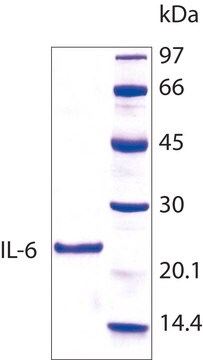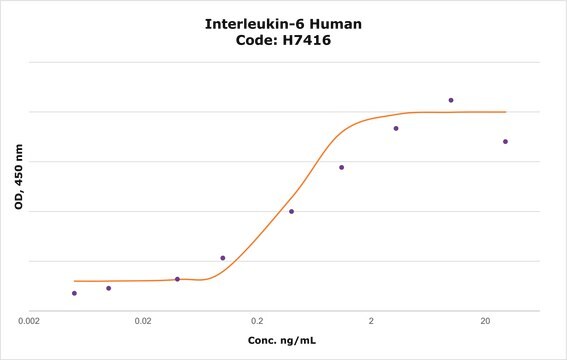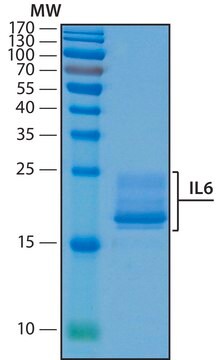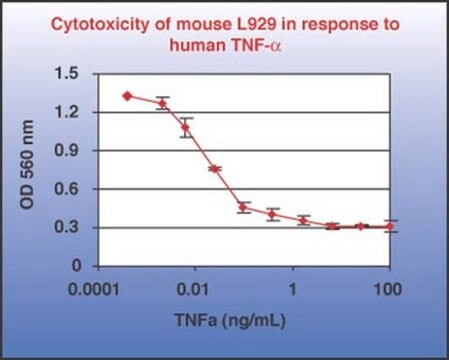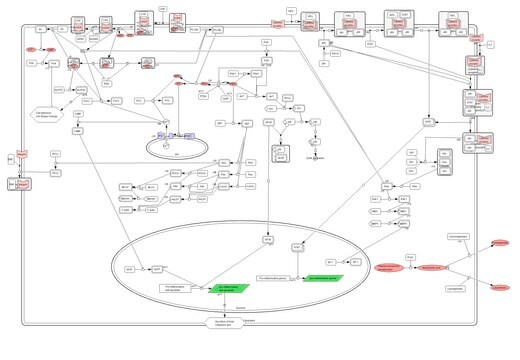SRP3096
Interleukin-6 human
Animal-component free, recombinant, expressed in E. coli, suitable for cell culture
Synonym(e):
IL-6
About This Item
Empfohlene Produkte
Biologische Quelle
human
Qualitätsniveau
Rekombinant
expressed in E. coli
Assay
≥95% (SDS-PAGE)
Form
lyophilized
Wirksamkeit
≤2.0 ng/mL ED50
Mol-Gew.
20.9 kDa
Verpackung
pkg of 100 μg
pkg of 20 μg
Methode(n)
cell culture | mammalian: suitable
Verunreinigungen
≤1 EU/μg endotoxin, tested
UniProt-Hinterlegungsnummer
Versandbedingung
wet ice
Lagertemp.
-10 to -25°C
Angaben zum Gen
human ... IL6(3569)
Suchen Sie nach ähnlichen Produkten? Aufrufen Leitfaden zum Produktvergleich
Allgemeine Beschreibung
Anwendung
Biochem./physiol. Wirkung
Verpackung
Sequenz
Physikalische Form
Rekonstituierung
Signalwort
Warning
H-Sätze
Gefahreneinstufungen
Eye Irrit. 2 - STOT SE 3
Zielorgane
Respiratory system
Lagerklassenschlüssel
11 - Combustible Solids
WGK
WGK 1
Flammpunkt (°F)
Not applicable
Flammpunkt (°C)
Not applicable
Analysenzertifikate (COA)
Suchen Sie nach Analysenzertifikate (COA), indem Sie die Lot-/Chargennummer des Produkts eingeben. Lot- und Chargennummern sind auf dem Produktetikett hinter den Wörtern ‘Lot’ oder ‘Batch’ (Lot oder Charge) zu finden.
Besitzen Sie dieses Produkt bereits?
In der Dokumentenbibliothek finden Sie die Dokumentation zu den Produkten, die Sie kürzlich erworben haben.
Kunden haben sich ebenfalls angesehen
Protokolle
XTT assay protocol for measuring cell viability, proliferation, activation and cytotoxicity. Instructions for XTT reagent preparation and examples of applications.
Unser Team von Wissenschaftlern verfügt über Erfahrung in allen Forschungsbereichen einschließlich Life Science, Materialwissenschaften, chemischer Synthese, Chromatographie, Analytik und vielen mehr..
Setzen Sie sich mit dem technischen Dienst in Verbindung.